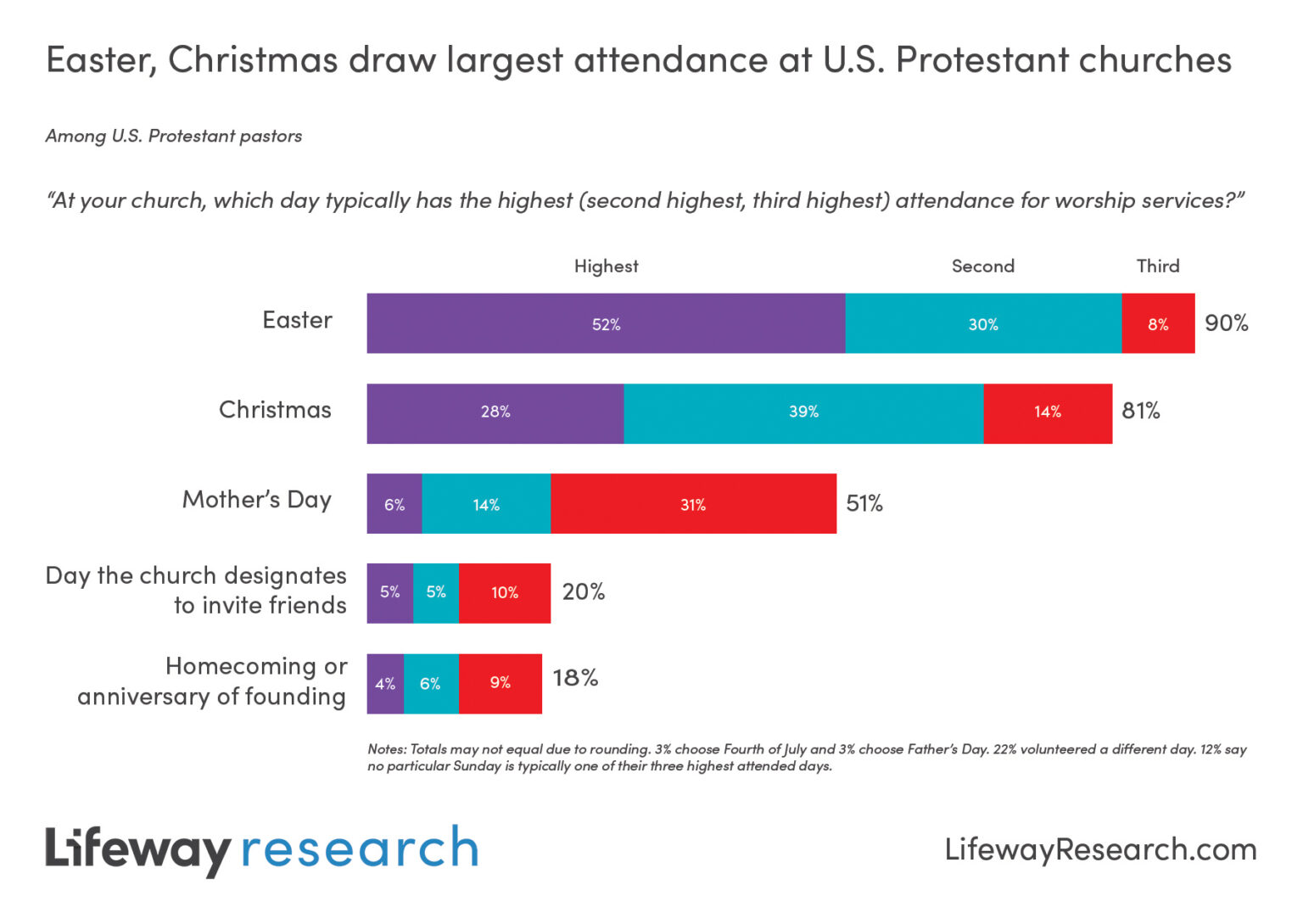
The anomalous attendance at Easter church services causes pastors to consider evangelistic opportunities, church growth, and community extension—but what about the other “church holidays?”
A Lifeway Research study shows that Resurrection Sunday attracts more non-Christian or casually religious people than any other special day on the calendar, as 52% of U.S. Protestant pastors nationwide claim.

This same discovery has only decreased by three points since 2011. The second of the church holidays that bring in the most people is what most would presume is Christmas (Eve or Day). A distant third among those special days should not be a surprise—Lifeway’s results show it’s Mother’s Day.
Should that be surprising, considering the importance of women to the Gospel? The return of Christ, the birth of Christ, and the reason Christ arrived in a manger in the first place.
What is it about these church holidays that attract millions of people who don’t claim or experience a strong relationship with God?
The Reality and Reasons for Church Holidays
As Mother’s Day, May 12, is among the top three most attended special days in church, a few other days not on the calendar made the researched group. Coincidentally, Father’s Day was the least attended, with only 3% of pastors acknowledging it.
In 2023, director of Lifeway Research, Scott McConnell, said about the same “telling” result via Charisma News, “Either churches are less effective in affirming fathers, or families believe Christian fathers don’t value their participation in worship services.”
Other days—church holidays, calendar listed, or otherwise—were designated days for members to invite friends (20%), Homecoming or Church Anniversary (18%), Fourth of July (3%), and Father’s Day (3%). Days with less than 3% included All Saints Day, Baptism, Christmas Eve, Palm Sunday, and Reformation Day.
The connection between the three significant days could be perceived as guilt and respect. Thom Rainer, founder and CEO of Church Answers, once noted reasons for the spikes in attendance over the trio of popular Sunday services that still appear to carry true today.
- For Easter, increased attendance involves church members who aren’t as “active” in small groups, ministries, and celebrated events. They attend “often to make their annual token appearance.”
- Christmas appeals to those without a relationship with the Lord. “Many unchurched are attracted to the traditions of Christmas.”
- Mother’s Day appeals to both groups because a doting mom’s desire “to have many family members attend church together” can be quite persuasive.
Welcoming and Keeping “Creasters” at Church
An affectionate telescope word for visitors who typically come to church on Christmas and Easter is “Creasters.” Mother’s Day hasn’t made that blend to date, but shouldn’t the more significant focus on Creasters be on their retention? If all these unchurched people would stay each year, there would be less reason for an overflow section of the church.
Last year, Lifeway Research became curious over the same thing, reaching three conclusions outside of the pandemic.
Comfort
Since the pandemic, the hybrid church model has become the most acceptable and welcomed form of worship. From pajamas to Polo shirts and khakis, the “come as you are” concept is literal.
Around “3 in 10” churchgoers prefer watching church online. There are other minor reasons for 31% to watch from home, like saving gas and not waking up in time, but 74% of that group cite convenience as the overwhelming reason.
Challenges
If it isn’t comfort or convenience keeping Creasters or anyone else at home, it impedes some sort. Over 35% cite “something happening” in the past two years that created a physical limitation, severe illness (like COVID-19), or a lack of mobility. Close to 16% claim those challenges as a “major reason” for not returning to the church building.
Changes
See you at the Cross on May 12.


